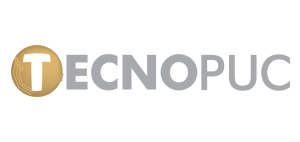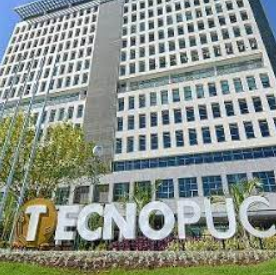Title:
Inspiring Solutions
Subtitle:
Acceleration of Synergies at TECNOPUC

By TECNOPUC - Parque Científico e Tecnológico da PUCRS, Year 2015 3rd place winner, located in Brazil
Keywords: networking
Launch date:
03 November 2014
Describe your solution in 50 words or less
The key challenge impeding the large scale generation of synergies across different business units in a research park is the sheer lack of visibility to each others capabilities and needs. The transaction cost of learning about what all the others could offer or need is overwhelmingly expensive and time consuming. As a result, only a small sample of the potential connections actually happen. The application of SRM to research parks creates unprecedented visibility to tenants capabilities and needs. A capability (or a need) is defined as something important for a companys success or failure. Some of these capabilities (or needs) are technical in nature, whereas others are related to commercial aspects of the business (say, pricing) or expertise in, say, creating sustainability. SRM is able to match companies with potential partners with needs for their capabilities and vice-versa. This matchmaking is made through a system enabled by proprietary algorithms augmented by the experience and human touch of a key group of managers working for the TECNOPUC team. The SRM implementation in a research park generates not only a list of capabilities available but also those not available. This analysis enables (a) to better support strategic decisions about which companies should be accepted / invited to the park (I.e., more of the same or something intentionally different capability-wise), and (b) the lack of certain capabilities that are considered critical creates the impetus to leverage University capabilities to offer courses/workshops or (c) segment further the types of events that are likely to satisfy different types of tenants. All of this contributes to increase TECNOPUCs value perception by internal and external stakeholders.
What is the purpose of your solution
One of the holy grails of research parks is the creation of synergy across tenants. Examples of different types of synergy exist in most parks typically, companies become aware of each others capabilities and needs through personal connections, networking events, or even through the work of individuals who make connections their mission. The connection of ones capabilities with anothers needs, or just a connection between capabilities of two or more companies, is arguably one of the avenues for innovation leading to commercial success. Although in some cases such synergies are extremely successful, it is hard not to think that serendipity plays a large role in this process, and that only a fraction of the potential is being explored. Ultimately, still missing is an approach that consistently delivers purposeful synergistic business connections, adding value to the tenants and to the park. TECNOPUC is a research park in southern Brazil with over 120 companies. At TECNOPUC, we envisioned a solution intended to create such synergy in a repeatable and value driven way. The first phase focused on 50 companies in the IT segment. The tool used to implement this vision was Strategic Resource Mapping (SRM), a methodology developed by Roberto Evaristo of Outthink LLC and that it is being applied for the first time in the context of STPs. SRM is a methodology designed to consistently and reliably accelerate opportunities to (a) create an intra-park market of products and services, (b) facilitate joint development and (c) enable cross-investment within the park. The ""Acceleration of Synergies at TECNOPUC"" project started in November 2014 and the end of the first phase is planned for July 1, 2015.
What is innovative about it
There are three main innovative characteristics in the solution. First, we created visibility for everyones capability and needs, decreasing the transaction costs of connecting with appropriate partners. Second, we created novel ways to access the outputs of this process: One, companies can query the database generated by SRM to identify who may have the capabilities they need or conversely, which companies may need the capabilities they have. Two, a proactive approach investigates value added combinations of capabilities, identifying companies that might consider teaming up to deliver on a particular value proposition. In other words, we have been able to streamline the search space instead of considering every company in the park as a potential partner, SRM helps companies focus on a subset of companies that are likely to have the capabilities or needs that are most complementary. Third, the existence of a structured way to identify the capabilities available (or missing) in the park created novel ways to manage the park blueprint, to offer value-added services, and ultimately to increase the likelihood that more companies get to find partners to create even further ways to leverage their capabilities.
What impact has your solution had
This project was designed to have impactful deliverables in each phase early, mid, and post-project. Early impact The taxonomy of capabilities was generated with participation of a third of the IT companies in the park. In these early meetings we observed (1) new relationships forming and (2) business deals taking shape which would not have happened otherwise. Mid-project impact Preliminary analysis of data revealed a detailed segmentation of needs and capabilities across the park. We learned that the most important needs related to management and marketing instead of to technical issues even though the project focus was IT companies. This finding enables PUCRS, the University owning TECNOPUC, to create value added offerings designed to bolster managerial capability and increase the likelihood of success of the companies in the park. We also identified clusters of needs creating an effective way to promote highly focused events. The output that has generated the largest tenant interest, however, has been a network map showing (a) which companies have capabilities that could address ones highest needs (the ""buy"" map) and (b) which companies have needs that match ones top capabilities (the ""sell"" map). One example of an ad-hoc map created during a use case meeting with a tenant: they had just engaged in a mobile software development project for a large client but did not have enough man-hours available in their team. The SRM output (""buy map"") showed companies with concurrent capabilities in all the areas required for the project, delivering on the spot a list of potential partners. Post-project impact Given the number and quality of the purposeful connections and therefore the ""acceleration of synergies"" already created in the 5 months since the project started, the long term impact is poised to be very large. The impact will be fivefold: First, to park tenants with an enhanced internal market for products and services second, with opportunities created for joint design projects third, for intra park investments (and visibility of capabilities to external stakeholders for enhanced marketing) fourth, improvement and focusing of interventions by TECNOPUC to leverage the University capabilities supporting success of the tenants and fifth, to create a research park tenant blueprint design tool to identify candidates which best fit with the park strategy. Metrics have been deployed and the value generated by purposeful connections are being tracked preliminary results will be available during IASP meeting in Beijing.
Who are the main users
The main users are the park tenants in a joint application with TECNOPUC management. External stakeholders will also be involved in Phase II.
Who runs it
TECNOPUC management group includes a ""relationship manager,"" The relationship manager has been deployed to support the creation of connections between companies. The formalization of the SRM approach will lead to the creation of purposeful connections that were not visible earlier furthermore, this role can now be thought of ""synergy architect"".
For more solutions from IASP member TECNOPUC - Parque Científico e Tecnológico da PUCRS click here


/canvascolor(0xffffffff)/2017_08_04_ATV.png)
/canvascolor(0xffffffff)/KSU_MasterLogo_Colour_RGB_copy_2_6.png)
/canvascolor(0xffffffff)/sip_zurich_rgb_transparent_1.png)
/canvascolor(0xffffffff)/MemberLogo-5557-5966.jpg)
/canvascolor(0xffffffff)/2019_11_12_China_Tuspark_(Jiangsu).png)
/canvascolor(0xffffffff)/MemberLogo-87901-361401.png)
/canvascolor(0xffffffff)/DSP_logotyp_svart_png.png)
/canvascolor(0xffffffff)/logo_en_UNESCO_2nd_combination.png)
/canvascolor(0xffffffff)/1200px-Logo_Sophia_Antipolis_12.png)
/canvascolor(0xffffffff)/2017_06_08_Panama_Ciudad_del_saber.png)
/canvascolor(0xffffffff)/MemberLogo-5669-6104.jpg)
/canvascolor(0xffffffff)/JOIST_Innovation_Park_Logo_-_White_1.png)
/canvascolor(0xffffffff)/New_Logo_sapiens_(1)_page-0001.jpg)
/canvascolor(0xffffffff)/2024_05_24_Kenya_Tharaka_University.jpg)
/canvascolor(0xffffffff)/2024_09_26_Thailand_Northeastern_2.jpg)
/canvascolor(0xffffffff)/2017_11_17_Taiwan_Southern_Taiwan_SP.png)
/canvascolor(0xffffffff)/V_CLR_1_1.png)
/canvascolor(0xffffffff)/2017_11_03_Spain_PT_de_Asturias.jpg)
/canvascolor(0xffffffff)/Logo_ZEDE_Color_1.jpg)
/canvascolor(0xffffffff)/WMV_logo_PNG_2024-03-03_14_03_12_1.png)
/canvascolor(0xffffffff)/2017_07_31_tecnopuc.png)
/canvascolor(0xffffffff)/MemberLogo-41301-6054.gif)
/canvascolor(0xffffffff)/logo_46.png)
/canvascolor(0xffffffff)/PSP_Logo-mit-Schriftzug_1.jpg)
/canvascolor(0xffffffff)/MemberLogo-5826-6312.jpg)
